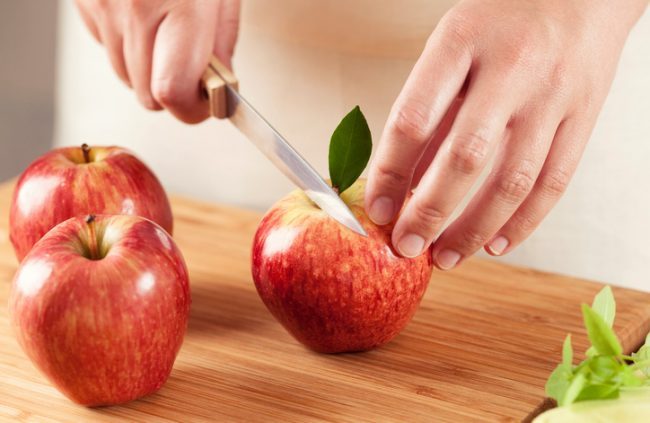Wouldn’t you love to cut into an apple and know it will not show any signs of browning?
That dream now has become a reality. But some critics see the development as more of a nightmare.
Sometime soon, Canada-based Okanagan Specialty Fruits will bring the first GMO apple – the Arctic Golden – to market. The apple will appear on store shelves in several stores located in the U.S. Midwest.
The Arctic Golden has been genetically modified not to brown when sliced or bruised. The apple has a synthetic gene that curtails production of polyphenol oxidase, an enzyme that causes browning.
Okanagan says the GMO apple will have the full flavor of a natural apple. In addition, participants in taste tests said slices of the Artic Golden had “a better crunch, texture and visual appeal than conventional slices,” Okanagan reports.
“I have tried them, and they taste like apples,” says Alison Van Eenennaam, an animal genomics and biotechnology cooperative extension specialist with the University of California’s Department of Animal Science.
Okanagan is betting the apples will be a hit. More than 80 percent of consumers say appearance is an important factor when shopping for produce, according to a Harris Poll.
GMO critics sound the alarm
However, not everyone is pleased with the introduction of the new genetically modified fruit.
Dana Perls, senior food and technology policy campaigner for Friends of the Earth U.S., calls the new apple “risky,” and says it raises health, environmental and economic concerns.
Perls questions the very notion of whether a nonbrowning apple is healthful.
“Scientists believe that apples’ natural browning enzymes may help fight diseases and pests,” she says. Farmers growing the Arctic Golden apple might have to use toxic pesticides to replace the benefit these enzymes typically provide naturally, she says.
Such pesticides have been linked to hormone disruption and reproductive harm, Perls adds.
Perls also laments the fact that packaging won’t clearly reveal the fact that the apples have been genetically modified.
Instead, consumers will need to scan a QR code to get that information, a reality Perls says “discriminates against people who lack adequate access to smartphones – primarily people of color and low-income, rural and elderly populations.”
Some conventional apple growers have expressed concerns that the synthetic gene in the Arctic Golden will contaminate their own apples.
Perls believes the U.S. government needs to do more to make sure the new apple will not harm consumers, farmers and the environment. “We need more sound and independent science before this enters apple orchards and people’s meals,” she says.
Perls also says there is a safe, natural way to prevent browning. “Browning in apples can be prevented using lemon juice or other natural sources of vitamin C,” she says.
She urges consumers to purchase organic and nonGMO apples.
GMO proponents say apples are safe
Other experts – such as Van Eenennaam – disagree and contend that GMO products such as the Arctic Golden are safe.
“They are simply apples that lack the enzyme that makes apples go brown when exposed to the air,” Van Eenennaam says.
A 2016 data analysis by the U.S. National Academies of Sciences, Engineering, and Medicine concluded that genetically engineered foods are safe to eat and do not harm the environment.
“Every major scientific society in the world has concluded this breeding method is not associated with food safety risks,” Van Eenennaam says.
Van Eenennaam says the new apple is the latest in a wave of GMO products that are reducing food waste. The products also have other benefits, she says, citing insect-protected crops that have “dramatically decreased” the use of insecticides globally.
She dismisses concerns about the apples as “fearmongering” and believes the new apples are worthy of a place in many households.
“If you routinely throw away the kids’ sliced apples from their lunch box because they did not eat them because they were brown, then these apples are for you,” Van Eenennaam says.

